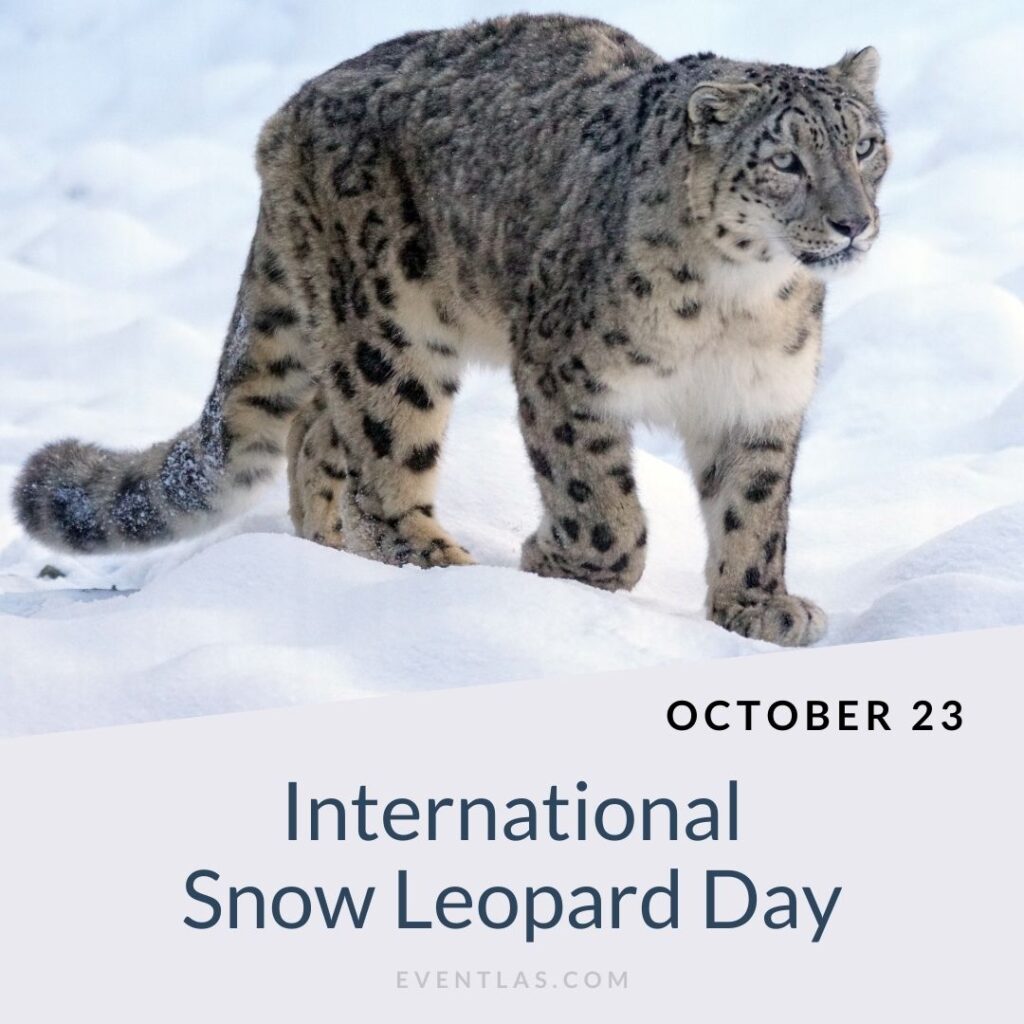International Snow Leopard Day, also known as World Snow Leopard Day, is an annual observance that takes place on October 23. This day provides an opportunity to celebrate these magnificent big cats. On 23 October 2013, a declaration for the conservation of the snow leopard was adopted in Bishkek, Kyrgyzstan. All 12 snow leopard range countries adopted this resolution. The resolution emphasized the need for urgent collective action to protect and recover snow leopard populations and their habitat. It was also declared that International Snow Leopard Day will be celebrated on October 23 each year so the first Snow Leopard Day was celebrated on October 23, 2014.
The tenth International Snow Leopard Day will be celebrated on Wednesday, October 23, 2024.

Interesting Facts about Snow Leopards
Let’s find out more about these spotted big cats on International Snow Leopard Day.
Snow leopards are tremendous jumpers and can leap further than any other animal. Their powerful legs allow them to leap as far as 50 feet.
These incredible creatures have long tails. Their tail can grow up to 90% as long as their bodies and they use it for balance and as blankets to cover sensitive parts of their bodies in extremely cold temperatures.
This inhabitant of the cold high mountains is the only big cat that cannot roar.
Snow leopards are so shy and elusive that they are rarely seen in the wild. These big cats are so reclusive that they are sometimes referred to as the ‘ghosts of the mountains’.
They inhabit the highest altitude documented of any cat and are found up to 20,000 feet high in the Himalayas, Southern Siberian Mountains, and Tibetan Plateau.
Thanks to their dense fur, they can endure temperatures as low as -40 Fahrenheit.
Snow Leopards have the densest fur of all cats with about 26,000 hairs per square inch.
Males require an enormous territory to roam — up to 80 square miles. That is more than the area of Washington D.C.
They can kill animals three times their weight and usually prey upon ibexes, bharals, argalis, pikas, hares, marmots, and game birds.
Related Events



